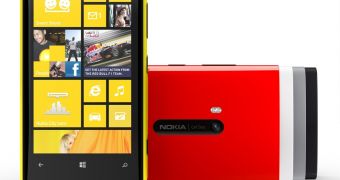Lumia 920 and Lumia 820, the upcoming Windows Phone 8 handsets from Nokia, are the first devices that the Finnish phone maker has ever announced with multi-core processors packed inside.
With the entire mobile industry moving to multi-core architectures – and the flurry of Android devices packing dual- and quad-core CPUs is proof of that – it was only a matter of time before that happened.
Of course, there was also the need for Windows Phone, Microsoft’s mobile OS, to offer support for these processors, and it all happened with WP8, set to become official at the end of this month.
Nokia packed its new devices with Snapdragon S4 CPUs from Qualcomm, and promises great performance levels for all users.
“Processors like the Snapdragon S4, which power the Nokia Lumia 920 and 820, are astonishingly complex pieces of silicon, packed with advanced technologies that affect every aspect of smartphone use,” Nokia notes in a blog post.
However, not all users might have a complete picture of what multi-core processing involves, and the handset vendor decided to provide us with its own take on the matter.
According to Nokia, dual-core processors do not offer twice the performance of single-core ones, mainly due to the fact that applications are built that way. Of course, there are apps and games built with multi-threading, but the vast majority of applications will take advantage of a single core of the processor.
“Imagine a coffee shop as the processor and the customers are apps that want coffee. The baristas, meanwhile, are the cores who serve it to them,” Nokia explains.
“A single barista pours coffee from one coffee pot to each customer at a time. If more customers demand coffee, the barista might not be able to serve coffee fast enough. In this case, the customer would need to wait.”
The addition of more cores is not always the right answer, Nokia says, adding that the increase of clock frequency might do the trick occasionally, but not at all times.
The main idea, however, is to have applications that can actually take advantage of all cores in a smartphone, something that would also save power through keeping cores running at low clock speeds. Snapdragon S4 was built for that, with Asymmetric Multi-Processing technology packed inside.
“Smartphone processors are definitely not created equal. You only need to look at the incredible ways the Snapdragon S4 contributes to the Nokia Lumia 920′s features to see that. However, when comparing devices, it’s clear we should take into account more than just the CPU core,” Nokia added.

 14 DAY TRIAL //
14 DAY TRIAL //